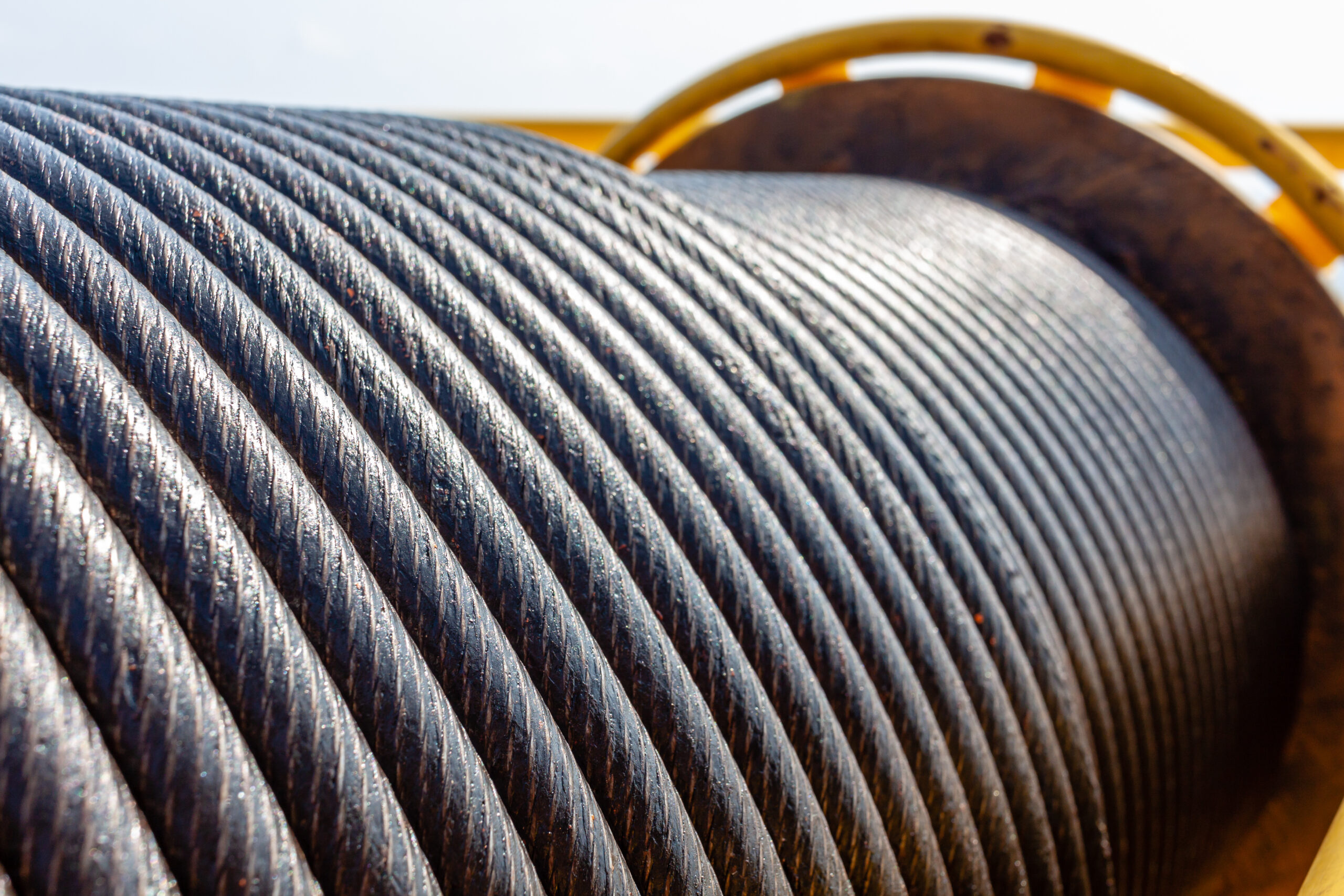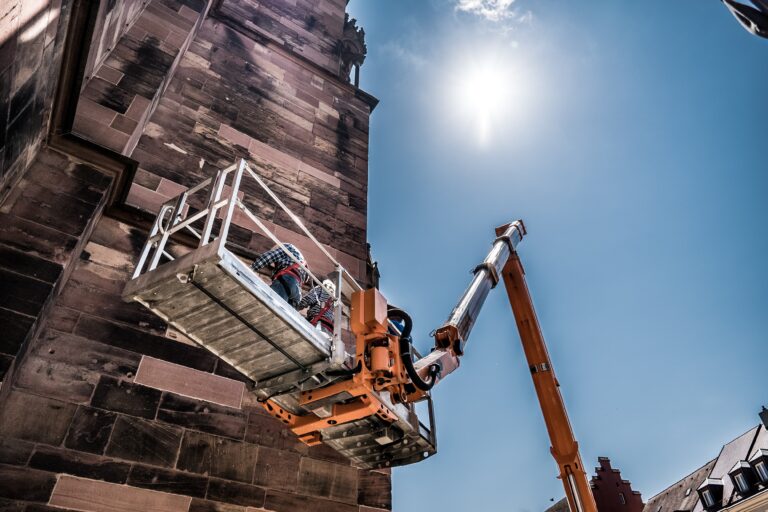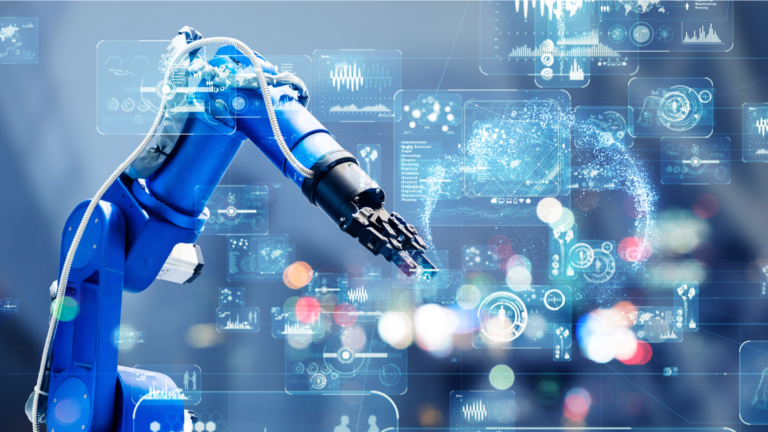
Whenever you introduce a new kind of system in a machine design, there’s going to be a set of new engineering challenges to consider. A new system could involve the addition of hydraulic actuators, electric motors, or any set of components that haven’t been solidly designed into a product line. This week, we’re taking a look at the design of cable-driven robots, the kinds of design challenges they present, and why you’ll want to use digital twins to prevent new issues from popping up.
There’s a variety of reasons for using cable-driven robots to solve problems. In the broadest sense, we’re defining these kinds of robots as any machine that uses cables, ropes, or chains as part of a winch or pulley system. Cabled-driven designs are seen in a variety of industries, from pick-and-place robots for industrial automation, to large-scale construction and shipping equipment. Introducing cable systems into your machines can help engineers move heavy loads by leveraging the mechanical advantages of pulley systems. For industrial automation, they can also be precisely tuned to move product at extremely high speeds.
Issues with Cable-Driven Robot Designs
There are a host of considerations for designing cable-driven robot systems, so getting these issues ironed out with digital twin-based simulations is an obvious choice to reduce the operational issues you might face. Consider a few of these design issues that need to be accounted for:
- Slippage: The connection between your cables and pulley isn’t perfect. Depending on how fast you’re moving varying loads with the cable and pulley systems, you might experience pulley slippage. This happens when the friction between the cable and pulley simply isn’t high enough to withstand the other loads in the system. Pulley slippage can present both operational and safety issues if they’re not properly designed for.
- Cable Bending: No cable is perfect, and depending on the size and length of your cables, there will inevitably be some bending of the cable itself. The bending will be more pronounced depending on the cable size and overall length of the cables through your system. An improper understanding of cable bending can result in your inability to move loads where need to be – a problem that’s even worse if you are running an automated machine without a manual operator.
- Wind Forces: In large-scale applications, the amount of surface area on cable systems (including the load itself) become a significant factor to consider. In systems like traditional cranes, wind forces can cause erratic movements of loads, making operation difficult. In other systems that are over-actuated and intended to be controlled more precisely, wind forces can add yet another force on the pulleys and winches – something to consider if the machine is automated. These forces need to be understand and baked into the design of both the machine and the potential control strategies.
Digital Twins can Help
Many of the products that involve cable-driven systems aren’t cheap – they’re often large machines that will require massive repair costs if there’s an issue that needs fixing. The relative cost of software-based solutions means that digital twins are a handy way to reduce the risk of development, even if they only help uncover a single issue that might not be revealed until after shipping to your customer.
Creating a digital twin is often where companies begin to hesitate, fearing that the internal skills development is going to muddy the path to a clear solution and a good ROI. Thankfully, modeling and simulation tools have come a long way. MapleSim, for example, contains several hundred design components that you can drag and drop into place, with automatic checks and balances to make sure you’re developing the model properly. Cables, winches, and other components can be placed in the model, and you’re free to easily adjust all the default parameters. As you build you model, 3-D visualizations help you get quick checks on how things are coming together. Of course, there’s work to be done to create a meaningful model that you can rely on – but this work pales in comparison to the scale of resources needed for fixing issues on physical prototypes. And, as a last resort, you can just consider outsourcing your entire issue (unwanted vibrations, for example) to firms that will use these tools for you, and get you the solutions you need.
Virtual Commissioning for Cable-Driven Robots
Many cable-driven robots are developed for industrial automation purposes. Like any automated machine, the control systems are essential to operation – they will ultimately decide how fast a given machine can run, how accurate it can move, and how to keep nearby operators safe.
With a digital twin of your cable-driven robot system, all of the usual benefits of virtual commissioning apply. You might wonder how fast your robot can move without the cable systems experiencing slippage, or before the motors are overloaded. The nature of cables also means that vibrations are going to play into machine dynamics, and by testing your control strategies against the digital twin, you’ll be able to design intelligent code that minimizes vibrations. Many of the benefits of virtual commissioning are so important because they let you get as close as possible to your system’s maximum performance – a kind of insight that’s hard to arrive at without model-based simulation results.
Consider how a digital twin might help your cable-driven robot systems. Whether you’re at the beginning stages of a new design, or desperately looking for a solution to an existing issue – a digital twin might very well be the solution you’ve been searching for.







